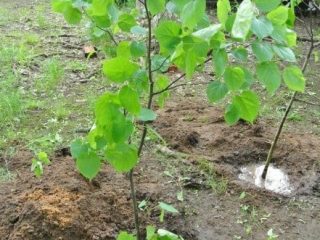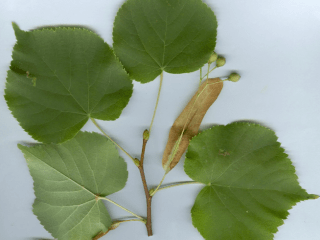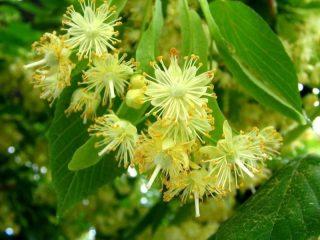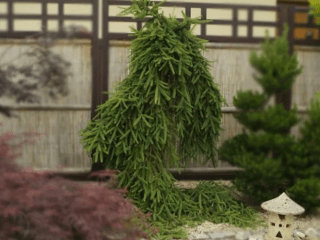Content
Linden is consistently among the popular deciduous trees. A plant with a neat crown and fragrant inflorescences is used for landscaping garden plots and urban areas. It can become an excellent design element for a public garden, alley, or park. If you follow the rules of agricultural technology, the crop takes root well. It is important to plant the linden tree correctly so that it adapts quickly.

Linden is considered a long-liver among deciduous trees; in comfortable conditions, some varieties live up to 1000 years
Is it possible to plant linden on the site?
Many owners of country houses are thinking about planting linden trees on their property. Experts recommend correctly assessing the backyard territory: is its area sufficient to implement the plan. Although the linden tree has a fairly compact shape, cultivating a deciduous tree in a small area is not the best idea. After a few years, the mature specimen will occupy a significant part of the territory. Therefore, on six acres, a mature tree is unlikely to be appropriate.At the same time, in a spacious area, linden is a good option for decorating a vacation spot.
How to plant a linden seedling in spring
The optimal time for planting a young tree is autumn. Based on centuries of experience, it has been established that seedlings take root better in cool and humid weather. Agricultural technicians warn that it is advisable to carry out the procedure at least three weeks before the onset of frost, otherwise the tree will not have time to take root in the area. It is also possible to plant in the spring, before the growing season begins.
Where to plant linden
Linden is undemanding to growing conditions, so choosing an area for planting the crop is not a problem. However, when deciding on a location, it is important to take into account some nuances:
- The shade-tolerant plant develops well with a lack of light, but in this case the tree looks squat and blooms later. Therefore, it is better to plant the linden tree in a place open to sunlight.
- The tree has a powerful root system, which makes it stable even in the face of hurricane winds. Thanks to this feature, even a young linden does not need protection from drafts.
- Deciduous trees are intolerant of stagnation of moisture in the soil. Based on this fact, the recommended groundwater level in planting areas is at least 2 m.
- The culture is undemanding to the composition of the soil. The optimal soil content for planting linden is sandstones rich in organic matter. The deciduous tree also grows well on loamy and clayey soil.
Before planting, poor soils should be diluted with peat and sand (10 kg per tree) and enriched with organic matter. In addition, linden thrives on soil with a neutral PH level. If there is high acidity, it is advisable to add wood ash to the soil; if alkalizing, add humus.
Seedling preparation
A simple and reliable way is to purchase a seedling from a specialized nursery. 2- and 3-year-old trees up to 1.5 m high are best suited for planting. It is important to make sure that the seedling is healthy and has a well-developed root system. A day before planting, the purchased specimen is placed in water. This is done to activate physiological processes in tissues. If you buy a seedling with a closed root system, it is watered two days before planting.
In addition, shoots should be shortened before planting. A pruning shear is required for pruning. The operation is aimed at stimulating the growth of lateral branches that form the crown.

Linden takes root and develops best on soils with a neutral acidity level from 6.5 to 7.5
Distance between linden trees when planting
When creating an alley or curtain between seedlings, it is necessary to maintain a distance of 3-4 m. When forming a hedge of trees, the distance is halved for density. The dimensions of the planting pit for each specimen are 50-70 cm deep and 0.5 m in diameter.
Planting linden seedlings
In order for the deciduous crop to develop well in the future, it is important to know the peculiarities of planting linden. The best soil composition is: part turf soil and two parts each of humus and sand.
The algorithm for agrotechnical operations is as follows:
- At the bottom of the planting hole, a drainage layer 10-15 cm high is formed and covered with humus mixed with superphosphate; a small mound of earth is poured in the center of the hole.
- Place the seedling on a hill, spreading out the roots well, place a wooden support nearby, about 1.5 m high, and water the seedling.
- The roots are covered with earth, compacting the soil at the base of the trunk.
After planting, the seedling is tied to the support with twine. To prevent the formation of damage to the bark at the points of contact, the trunk is wrapped in matting.
Reproduction methods
In addition to propagation by seedlings, there are other methods of propagating linden trees. Agricultural technicians recommend such methods of crop propagation as sowing seeds, rooting and separating layering, and planting cuttings.
Propagation by seeds is a long process. At least 10 years must pass before a mature tree is obtained. The sowing procedure includes a number of sequential operations:
- Seed stratification (cold storage) for 5-6 months.
- Sowing in a container indoors or in a designated plot on the site.
- Transplanting seedlings to a permanent place.
When propagating by layering, the lower branches are bent to the ground, placed in shallow trenches, dug in, covered with soil. After 1-2 years, the rooted shoots are separated from the mother tree and planted in the planned location.
To propagate linden by cuttings, planting material is cut from the tree in the second half of May. For harvesting, choose a cloudy, rainy day. Sometimes cuttings are cut in the fall and stored in the cellar in winter. The dimensions of the blanks for planting are as follows:
- 10-15 cm long;
- 6-10 mm thick.
It is important that each cutting has 4-5 growth buds.Even if the rudiments are dormant, they will come to life after planting in cups or peat pots. The cuttings are deepened to 1.5 cm, the substrate is compacted, and watered moderately.

A greenhouse is created above the pot from polyethylene or a cut plastic bottle
Further care
The appearance of new leaves indicates that the plant has taken root successfully. Agricultural techniques for growing young linden include:
- regular watering (the soil should not be allowed to dry out);
- additional daily spraying in hot weather;
- root feeding once a month with fertilizers based on humates or ready-made complexes;
- weeding the tree trunk from weeds.
In autumn, nutritious compost is poured under the young tree. In winter, the adjacent soil is mulched with rotted peat or sawdust. In spring, linden is watered with mullein solution.
Warning! Adult specimens do not need watering or feeding. A mature linden tree, as a rule, has good immunity, so the tree is resistant to fungal infections.

Linden is resistant to aggressive environmental influences: gas pollution and industrial dust
Diseases and pests of linden
Young linden trees are more susceptible to diseases than mature specimens. There is also a risk of developing infection if the tree grows in an environmentally unfavorable place, for example, near a highway. Another factor that causes negative consequences is improper trimming of the crown or the use of undisinfected tools during sanitary pruning.
Thyrostromosis
A dangerous disease is caused by a pathogenic fungus that affects all parts of the plant. At first, branches with good dense buds, but without leaves, are noticeable on the tree.Subsequently, formations appear on the shoots - numerous spores, and the leaves become smaller and turn yellow. Gradually the process spreads to the entire crown. Dark, depressed spots become visible on the trunk, the bark dries and dies. Almost black stromas form in the cracks. At the last stage of thyrostromosis, the wood of the trunk is exposed and covered with wounds.

The spread of pathogenic fungus is provoked by mild winters with frequent thaws.
White marble rot
The fungus that provokes the putrefactive process most often affects the lower part of the trunk and root system. The disease manifests itself in leaf spotting and premature falling off. Subsequently, the trunk becomes bent, cracks and wounds form, and branches become poorly overgrown. The infection affects the seeds and threatens the health of the seedlings.

White marble rot is characteristic of old lindens and weakened trees; after cutting, the place of rotting is visible on the stump
Young crops may be attacked by insect pests. Spraying deciduous trees on the site in early spring with a 3% solution of Bordeaux mixture and at the beginning of the growing season with insecticides prevents the spread of parasites.
Willow scale
The willow scale insect lays its eggs for the winter in linden tissues. During the flowering of berry crops, larvae emerge from them. The colonization of trees by willow scale leads to the death of branches and falling leaves.

Willow scale insects can quickly occupy the crown, undermining the immunity of the linden tree.
Gall mite
A microscopic parasite, the gall mite, forms galls on leaves with voracious offspring. Mites feed on plant tissue. As a result of biting, red “horns” are formed on the leaves.

Having settled in the buds of the linden tree, gall mites suck the juices out of them, as a result the shoots become deformed
Polyphagous cutworms
Pest butterflies mercilessly eat leaves and buds of linden trees. The tree is covered with a continuous web. In order to destroy the pest population, plantings are treated with insecticides.

To spray tall trees with insecticides, it is more convenient to use a backpack apparatus
What to plant next to the linden tree
Linden trees, like other deciduous trees with a spreading crown, form a special microclimate. Due to the lack of sunlight, shade-tolerant plants should be planted nearby. The linden root system goes deep into the ground, so shrubs and ornamental perennial crops grow well in the vicinity of the tree:
- honeysuckle;
- aconites;
- aquilegia;
- buzulniki;
- bells;
- crocuses;
- nasturtiums
To ensure flowering lasts from spring to autumn, you can plant plants with different growing seasons. Deciduous trees will be good neighbors for linden trees.
Linden in landscape design
Linden is a popular element in landscape design, and therefore the deciduous plant can often be found in summer cottages. A low tree with a beautiful crown looks great as a single specimen. Group planting looks no less impressive: a small curtain or a long linden alley.
The plant forms a beautiful ensemble with other deciduous trees. A particularly impressive sight is linden combined with rowan, maple or oak in early autumn.

A variety of bright colors and shades of foliage attracts everyone's attention
A fashionable option for landscape design is linden trees planted in a row, forming a trimmed hedge, or bosquet (green wall). An exquisite solution is berso made of trees. An arch of trees intertwining branches is an original design for a spacious area.

Depending on the type, linden trees have different crown shapes: pyramidal, spherical
Conclusion
Linden can be planted in almost any area. The unpretentious culture adapts well to the territory and does not require labor-intensive care. Trees with beautiful crowns are widely used in landscape design and are combined with other deciduous trees, perennial shrubs, and ornamental flowering plants.











